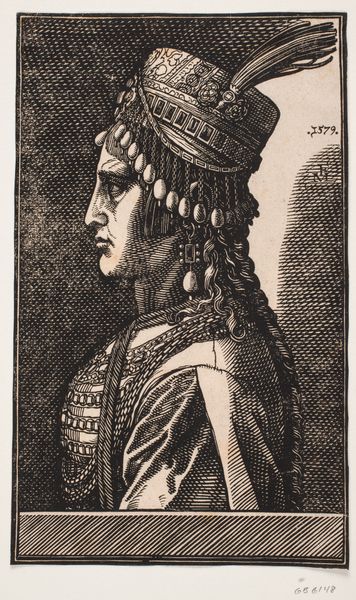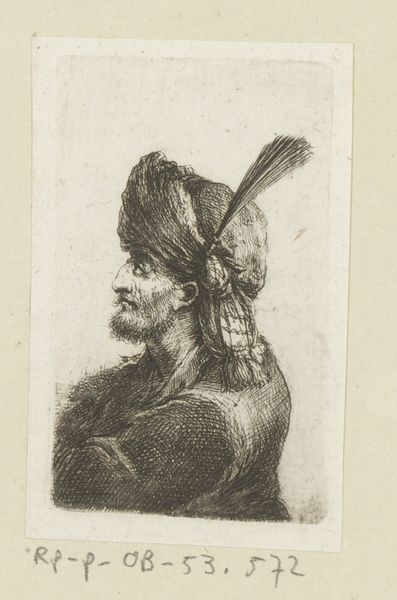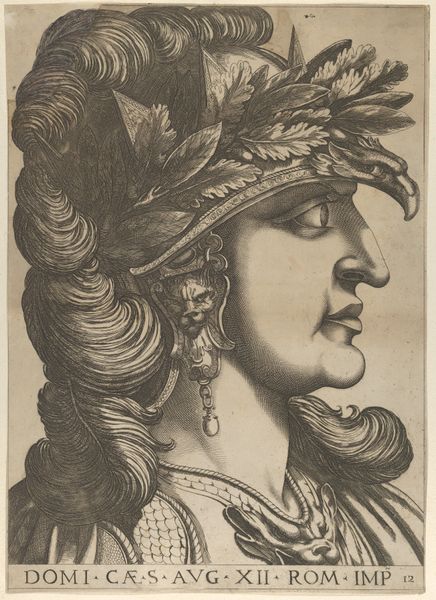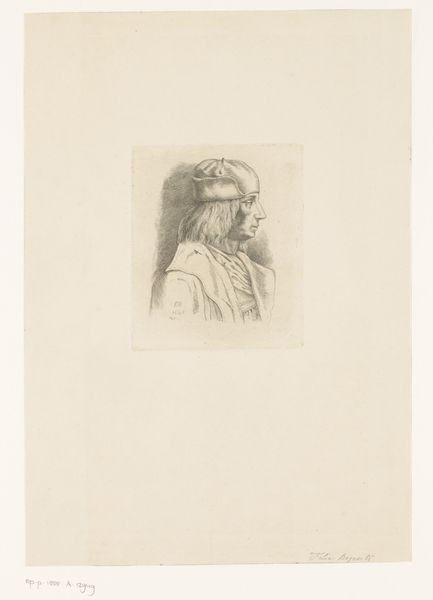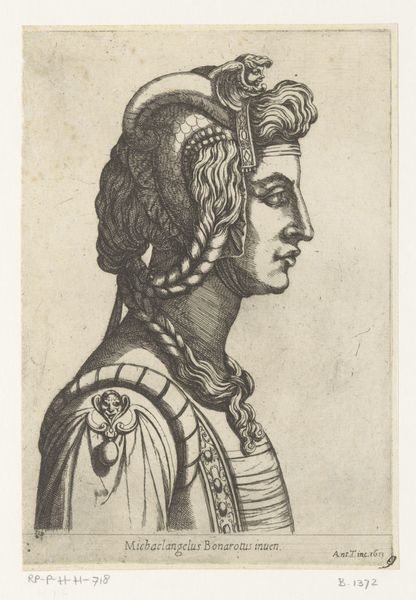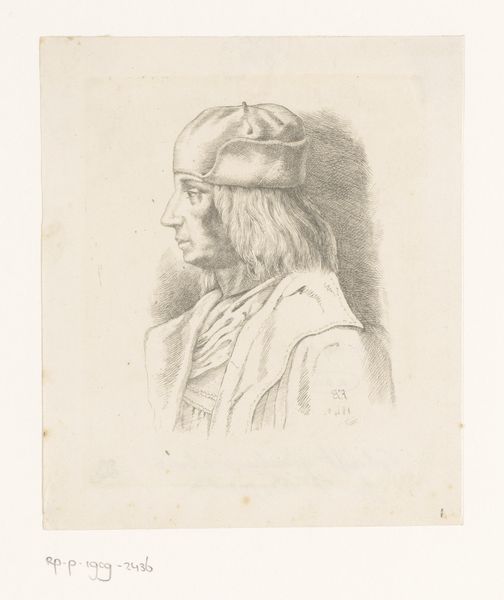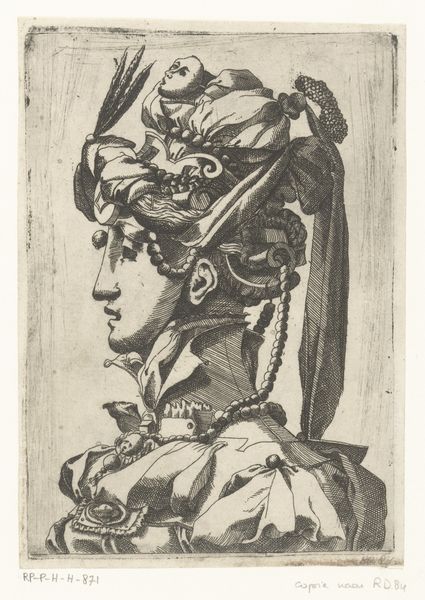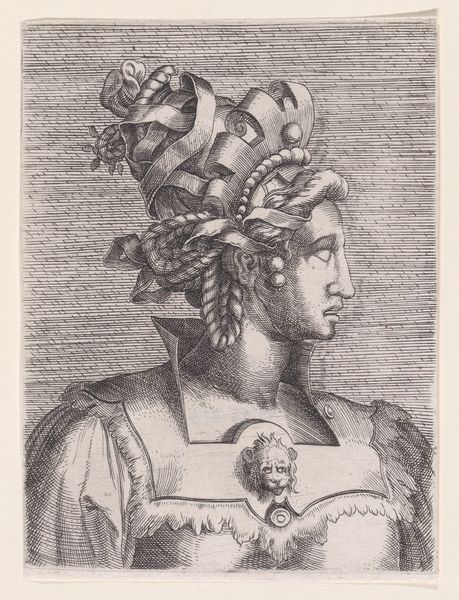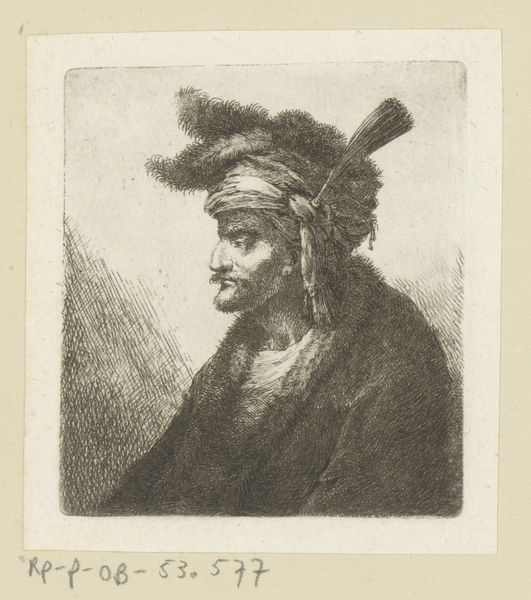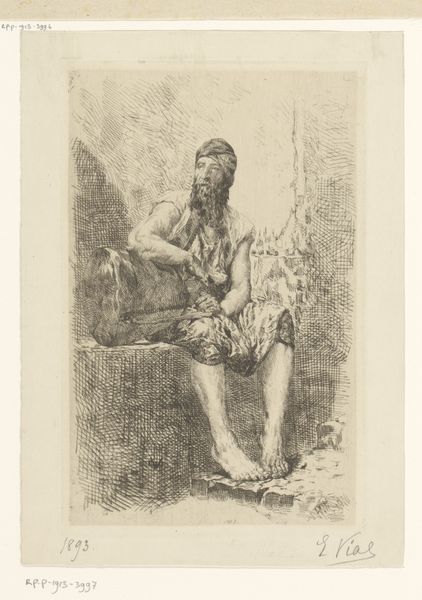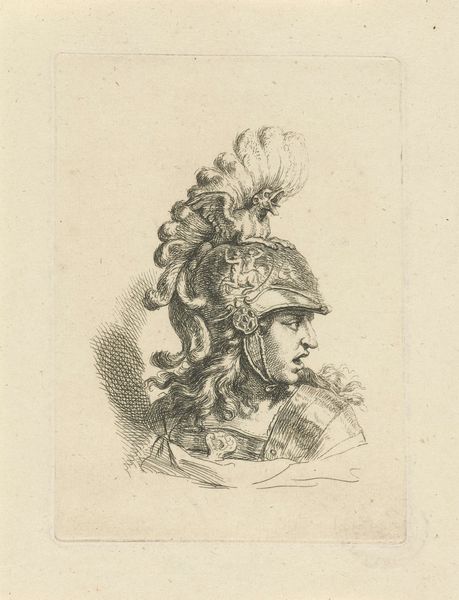
drawing, print, engraving
#
portrait
#
drawing
# print
#
old engraving style
#
11_renaissance
#
portrait drawing
#
islamic-art
#
engraving
Dimensions: height 238 mm, width 146 mm
Copyright: Rijks Museum: Open Domain
Curator: I’m immediately struck by the contrast between the opulence of her attire and the austerity of the engraving. It feels like a clash of cultures rendered in monochrome. Editor: That's quite perceptive. What we're looking at is a 1579 engraving by Melchior Lorck, titled "Portret van een onbekende vrouw van een sultan," housed here at the Rijksmuseum. Lorck was quite active in depicting Ottoman court life. Curator: Yes, the exotic other rendered for a European audience! But even divorced from that colonial lens, I find her jewels and feathered headdress completely captivating. The image has an ancient sensibility, linking her to all female forms of the era who held significant positions. Editor: Indeed, Lorck’s detail is astounding, given the medium. Note the painstaking rendering of the fabric, the individual pearls adorning her turban, each reflecting light in its own unique way. He really aimed to convey not only the physical likeness but also a sense of the sitter's wealth and status, as seen by European aristocracy. Curator: Wealth and status communicated through specific symbolic languages, even, and especially across cultural divides. I mean, what *does* a pearl necklace say, universally? It marks this woman as valuable, precious, protected. That headdress practically screams authority! Editor: But whose authority? I think this gets to the crux of the image as historical document. Lorck presents her as a type, as representative of the Sultan's court, which shaped both diplomatic relations and local expectations regarding gender roles and cultural representation. Is he truly showing her power, or framing her within pre-existing European ideas of sultans and harems? Curator: The tension there is what gives the image its power for a contemporary viewer, wouldn’t you say? That very push and pull between observed detail and imposed narrative makes the work dynamic and thought-provoking, it invites further scrutiny and investigation of this unnamed and unfamiliar Sultana figure. Editor: Precisely. It underscores how images are never neutral carriers of information, but are active agents in shaping perception and memory. Curator: In short, Lorck's work isn’t just a historical artifact; it’s an invitation to question how we perceive and represent other cultures and their people even now. Editor: And how we consider how even portraiture, even of unknown sitters, contributes to shaping narratives of gender and power. A powerful print indeed.
Comments
No comments
Be the first to comment and join the conversation on the ultimate creative platform.
